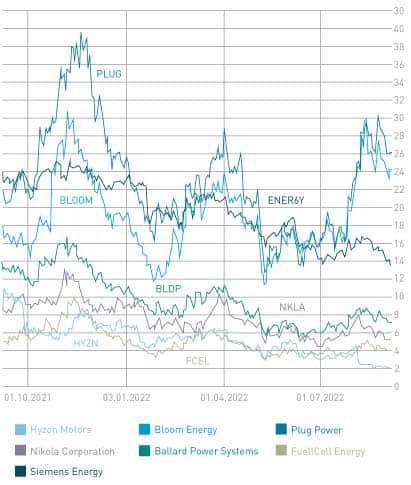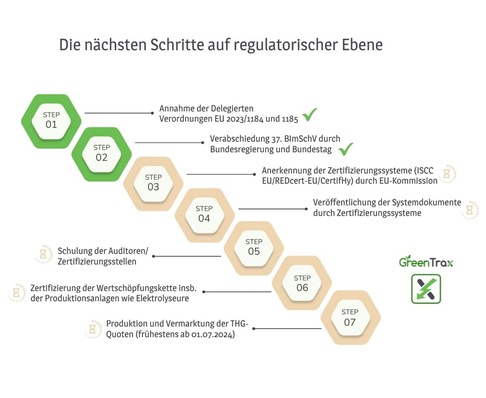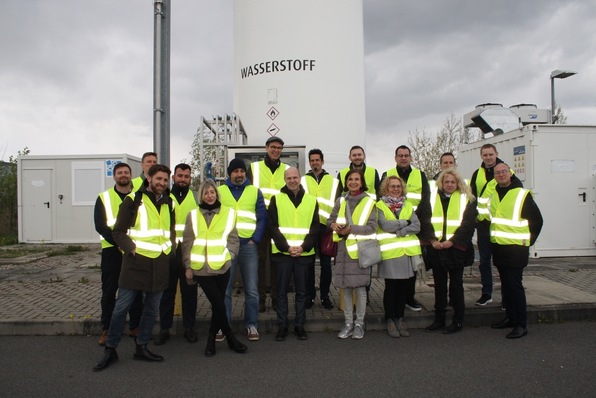The interest rate hikes in the USA, necessary to combat inflation and already in prospect, is putting stock markets around the world to the test. Such a damper, since this economic development will affect the growth of companies, as consumers will be more inclined to reduce their expenditures. That’s sure to the case in many instances, as rising costs for energy and food are placing a heavy burden on numerous households. In the US, consumers, which account for nonetheless two-thirds of the gross national product, are the basis for the economic growth that is therefore based on demand by them. But the US Inflation Reduction Act promises a lot of good things for the H2 and FC sectors in particular.
Share price performance of the companies discussed
Source: www.wallstreet-online.de
The Inflation Reduction Act already in force stands for the topics of energy security, decarbonization and electromobility in the USA and of course provides massive support to companies that are active in the field of hydrogen and fuel cells there. And it is specifically these companies that we cover here in this stock analysis, as they – worldwide – are on the verge of tremendous, sustainable corporate growth. Which of course also has a positive effect on the associated share prices.
Thus, there will not only be losers on the stock market, but also winners with technologies and business models that are good for the climate. And that stand for falling energy prices, when hydrogen as an energy carrier becomes available in ever larger quantities at ever lower prices and competes with fossil energy carriers. At the end of the day, this is then even one of the many ways to counter inflation via falling energy prices, which should please Federal Reserve chairman Jerome Powell, even if inflation in the US is, at the moment, still being combated with rising interest rates.
The shares discussed here might even end up among the winners, since stock traders do not orient their actions only according to the general economic situation, but also assess an individual case or an entire industry according to its outlook. Institutional investors, such as BlackRock, even set this as an investment focus.
Investors with a medium-term investment horizon need not be alarmed by this if they hold shares in the hydrogen economy and should maybe even have bought again, bit by bit, since the trend of this market is very predictable – in a positive sense. On top of that, many of these – examples are Ballard Power and Nikola Motors – are at a low price level. Where – despite rising interest rates – medium-term, the share price is more likely to go sharply up than further down, if the companies would only implement what they themselves forecast. But that’s just my personal view of things.
Of course no share can escape a general stock market trend (a bear market due to interest rate expectations), but there are at all times winners and losers. The former will be found on the stock market in the hydrogen sector, because all the arguments are in their favor. And many stocks in the US H2 and FC sectors are trading at crash levels, when looking at the share prices from the turn of the year 2020/21 in comparison. Which are also in total contradiction to the milestones achieved in the meantime.
American climate bill finally passed
The Inflation Reduction Act was the result of a very close vote. In the US Senate, the bill passed with 51 votes to 50 and with ex officio Senate president and US vice president Kamala Harris breaking the tie. On August 12, 2022, the bill passed in the House of Representatives with 220 votes to 207. After its signing by President Joe Biden, the law is now in effect and will lead to the implementation of many a climate-related funding program in the USA. A leg up for companies that are engaged in this topic, and above all for many, if not all, of the companies discussed here.
Drawn-out process
This was initially preceded by a no vote from Joe Manchin. And so he was the only Democratic senator to deny support for the Biden administration's comprehensive plans regarding climate change and thus blocked important decisions, since a stalemate was created between Republicans and Democrats in the Senate. It was like he was the finger on the scale. But now Manchin has agreed to the program upon certain conditions. In addition to the provisions for measures against climate change, there will also be a debt reduction (minimum tax for companies, closing of certain tax loopholes, price negotiations for medications, and more).
In total is a formidable 369 billion USD, which is to be invested in e-mobility, solar power and wind energy (production facilities/projects for solar panels and wind turbines, R&D) but also to promote energy efficiency measures as well as carbon capture. Hydrogen especially is a topic of importance. Here, the range extends from a tax credit of 0.60 USD per kgH2 (base rate) for the production of green hydrogen up to a 3 USD per kgH2 production tax credit if the facility for green hydrogen meets additional criteria. The aim is to promptly make green hydrogen competitive with hydrogen obtained from natural gas.
Additionally, the act includes funds for research and development of, among other things, electrolysis technologies to make the production of hydrogen more efficient. Forecasts see the H2 price at 1 to 2 USD per kgH2 by year 2030. Instead of claiming tax incentives (tax credits), there is also the possibility for companies to opt directly for payments (grants). Which is good for their liquidity.
On the topic of decarbonization, there will be tax incentives for carbon capture measures (storage/deep well injection = CCS). Here, 85 USD per tonne of CO2 will be granted. If CO2 is stored in the earth under gas or oil fields or even experiences another use in industry, it’s 60 USD per tonne of CO2.
The whole program therefore covers perfectly a variety of different areas for decarbonization in the US and that address climate change through technology and market-based approaches. Comparing the program with similar ones in Europe, the US is really stepping on the gas, while Europe unfortunately still seems rather reserved with its programs. Even the 1 to 2 billion EUR set aside in Germany for subsidized purchase of hydrogen from around the world via the project H2-Global pale in comparison to the plans of the US. For the US companies discussed here, like Bloom Energy and Plug Power, the planned new programs are to be seen as a turbocharge for the individual business fields and will have a very positive impact on their share price performances – maybe not tomorrow, but in the future will there be positive effects.
Disclaimer
Each investor must always be aware of their own risk when investing in shares and should consider a sensible risk diversification. The FC companies and shares mentioned here are small and mid cap, i.e. they are not standard stocks and their volatility is also much higher. This report is not meant to be viewed as purchase recommendations, and the author holds no liability for your actions. All information is based on publicly available sources and, as far as assessment is concerned, represents exclusively the personal opinion of the author, who focuses on medium- and long-term valuation and not on short-term profit. The author may be in possession of the shares presented here.
Author: Sven Jösting, written August 30th, 2022









